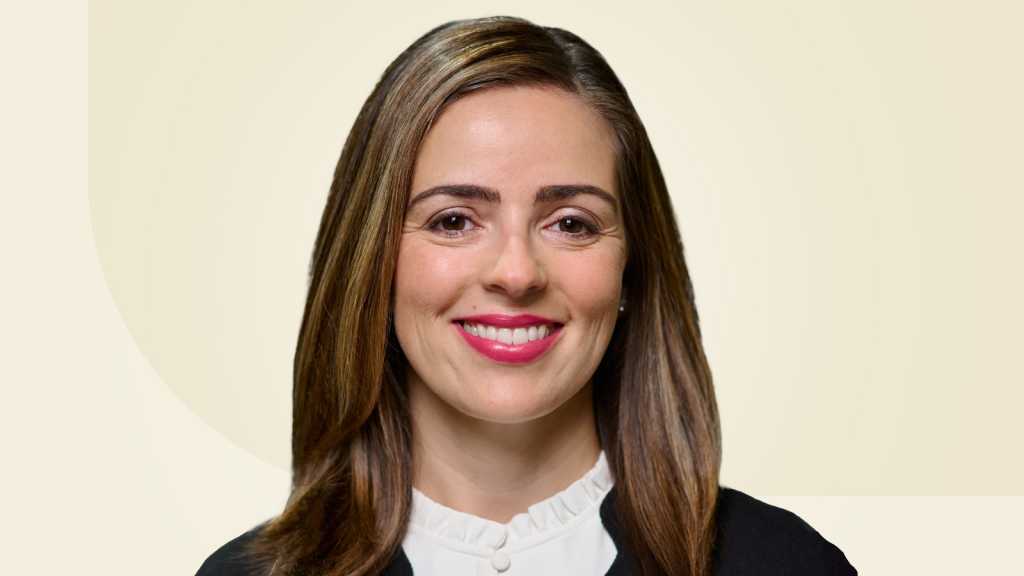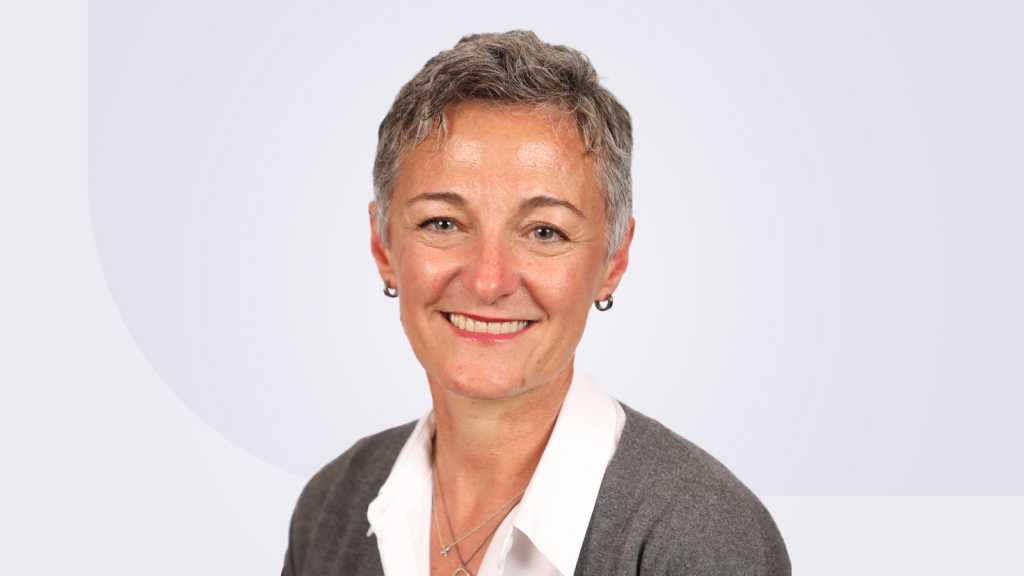- “문화 우선 접근이 성공의 비결” 에이버리 데니슨의 AI 혁신 전략
- “여러 AI 모델을 로컬에서 테스트 가능”···구글, 오픈소스 앱 ‘AI 엣지 갤러리’ 공개
- Why I recommend this OnePlus phone over the S25 Ultra - especially at this new low price
- I replaced my laptop with Microsoft's 12-inch Surface Pro for weeks - here's my buying advice now
- This palm recognition smart lock doubles as a video doorbell (and has no monthly fees)
Ceiling breakers: Women IT execs shake up the status quo

Kimberly Wood, CIO, Guardsquare
Guardsquare
“When I got into the Army, they figured I’d be good for the Signal Corps and that’s where I got introduced to information technology. It was something I knew how to do and do well, and I enjoyed doing,” says Wood, who had enlisted after earning her bachelor’s degree in computer technology.
Wood ascended the IT ranks quickly after leaving the Army and entering the civilian workforce. She says she knew early in her career that she wanted to land an executive position.
“I wanted a seat at the table, and I realized I could make decisions as good as or better than the people I had been working for,” she explains. “It was also about being in an executive role because I like to lead people.”
As CIO, Wood leans on her military experience to run her IT operations. “I run my shop very tight, much like a military command. Here’s what you do, how you do it, when you do it. Here’s how you communicate, here’s how we empower the team,” she says, noting that her leadership style isn’t as rigid as the military’s but still provides the structure she sees as essential to helping all workers thrive in their roles.
But being a woman in professions where statistically women are underrepresented hasn’t been an issue for Wood. “I can’t say I’ve had any barriers,” she says, noting that her employers have consistently focused on “who is the right candidate for the company” with all its hires.
Moreover, she sees more women applying for technical positions, notably on the product side.
As CIO Wood is “focused on supporting the growth of Guardsquare, enabling it to scale in an effective and secure way” as well as ensuring that all workers can be their best. “I’m working to build empowered teams that can thrive with or without me. I think that’s how you define success,” she says.
Plotting a path forward
S. Yvonne Scott is another female IT leadership pioneer who early in her career saw technology as a way to feed her career ambitions. Scott started her professional life as an IT auditor, an emerging discipline at the time she entered the workforce after earning a bachelor’s degree in general management and accounting.

S. Yvonne Scott, CEO, CIO Concierge LLC
CIO Concierge LLC
“I thought [the work] would differentiate me, and that proved to be true,” she says.
At the same time Scott developed aspirations to be a business leader: “I wanted to be in a position that influenced the direction of the company. I wanted my work to be meaningful. And I wanted an opportunity to work on strategy.”
Recognizing that “you won’t become an executive as an auditor,” Scott leaned into her strategic skills, plotted a path forward, and eventually moved into a technology position. The timing was good, she says, coming at a time when technology was becoming “more and more important to strategy for companies.”
She worked for GATX, a railcar company, for 17 years in a series of increasingly high-level roles. She eventually became vice president and CIO of GATX Rails and then senior vice president and CIO of GATX. The latter was a new position, the company’s first enterprise CIO focused on delivering operational excellence and competitive differentiation. Scott was the first to hold the title.
Scott acknowledges that gender had been a factor at points in her career. Early on she encountered men who said they didn’t want women in leadership roles. On the other hand, she has worked with executives committed to creating more gender equity and bringing women into leadership roles.
Scott is reflective and honest about how the timing of her career impacted her ability to succeed. “Had I been born 10 years earlier it would have been highly unlikely that I would have ended up in the position I had,” she says. “Some of your career is determined by the circumstances you find yourself in. You can only control so much of it. You can be equally talented but not exposed to the right people or be there for the right opportunities.”
Scott left GATX in 2007 to become CIO of Crowe, an accounting, consulting, and tech firm. She retired from that position in 2020. She’s now CEO of her own business, CIO Concierge LLC, a niche consultancy that provides executive-level coaching as well as IT branding and strategic planning services. “It’s a way to pay it forward and help the next generation of technology leaders,” she says.
Up for the challenge
Liberty Mutual Insurance Executive Vice President and CIO Monica Caldas credits, in part, a passion for technology and an early interest in problem-solving for setting her on the path to the executive suite.
She credits determination, too.

Monica Caldas, EVP and global CIO, Liberty Mutual
Liberty Mutual
“As an immigrant child, I learned that we are in charge of our own destiny,” she says. “I came to this country when I was young, and when we first arrived, my dad told me that America was a place for opportunity for those who work hard. That moment, and so many others, helped motivate me.”
After earning a bachelor’s in information systems management, Caldas joined General Electric where she went through its Technology Leadership training program.
“It was through that program that I learned how to push the limits of problem-solving with technology,” she says. “It was a path that really kept me glued to the journey and one that led to a 17-year career at General Electric in roles with increasing levels of responsibility, global perspective, and leadership [including CIO positions].”
Caldas moved to Liberty Mutual in 2018, accepted a business segment CIO role to help the Retail Markets division accelerate a widescale transformation effort. She explains: “I was intrigued by the opportunity to help transform the insurance industry with technology and data in a very meaningful way.”
Caldas took over the global CIO role in January 2023, joining the company’s executive leadership team and overseeing a team of 5,000-plus engineers. She is the first woman to lead the company’s technology department. None of that rattled her.
“Throughout my career, I have been drawn to roles that had big, complicated problem statements across various industries and parts of the world,” she says. “All of the different roles I’ve pursued are about pushing the art of what’s possible and not settling for the status quo.”
Yet at the same time Caldas, like other female CIOs, recognizes the gender imbalance that persists in IT. She points to studies that show women hold just 26% of technology jobs.
“As I step into the CIO role as the first woman leading technology at our company, I think about how I execute on the role. The demands of the job don’t care what gender orientation you are,” she says. “However, being the first female, I am also keenly aware that I have an incredible opportunity to inspire others, whether they are immigrants of various genders or if they are women who are unsure that they have a place in tech. Thus, my mission is first to continue to support the inclusive culture that we have for all people of all backgrounds to succeed in their own personal career aspirations.”
Enabling change
Lucilla Rastelli’s CIO ambitions started early in her career, which started when she took a job with South African Airways right out of high school. She says company officials recognized her aptitude for math and computer science and offered her a position in an IT training program.

Lucilla Rastelli, CIO of global service and supply chain, GE HealthCare
GE HealthCare
“I realized early that I was focused on solving problems and helping people. And I fell in love with it, and the ability to solve problems,” Rastelli says. “I quickly identified that technology could be very instrumental in driving change, in driving business outcomes, and also in helping people. So early on I knew I wanted to reach the top spot. I wanted to hold the seat where I can have the most impact.”
She achieved that objective in 2019, when she took her first CIO position at GE HealthCare. She moved up to her second CIO position at the company two years later and then in February 2023 became the company’s CIO of Global Service & Supply Chain. She is the first person in the newly created position and one of five CIOs at GE Healthcare.
Rastelli acknowledges some challenges as she built her career.
She couldn’t afford the cost of college when she graduated from high school in her native South Africa. However, she earned her bachelor’s in the United States through GE’s tuition reimbursement program.
And she says she experienced some self-doubts. “One of the first obstacles I encountered was my own imposter syndrome,” she says, explaining when there’s a lack of female talent in the leadership ranks “you wonder if you belong. But I’ve also encountered some very strong support, and it enabled me to be bold.”
As CIO today, Rastelli focuses on “being able to drive fantastic business outcomes for GE HealthCare, being aligned and enabling strategy through technology. I’m always focused on what we can do to help GE HealthCare achieve its goals.”
She says she’s also focused on creating a workplace where her team can help her achieve those objectives “in a way that brings people the most joy and the most rewards in their careers.” She strives to create an environment where employees can be their best selves and contribute their maximum.
Rastelli says she’s also cognizant of the need to bring more women into the profession and to retain those who enter but leave as they advance. And she challenges others to do the same. She recounts one recent networking event where she was the only female CIO among dozens attending. When it was her turn to speak, she offered the attendees a challenge: “Next time we get together you have to bring someone who looks like me.”

